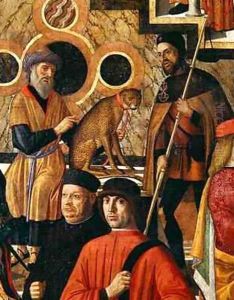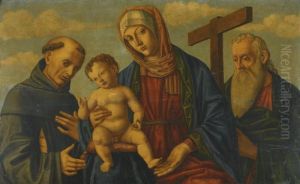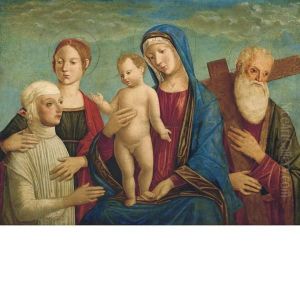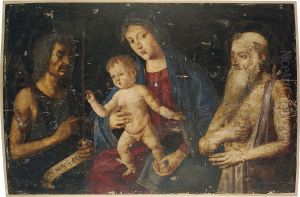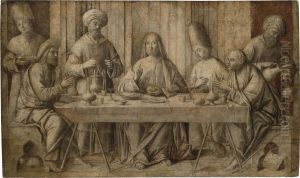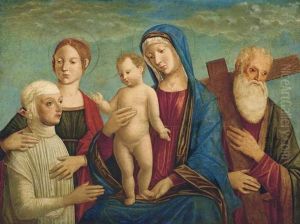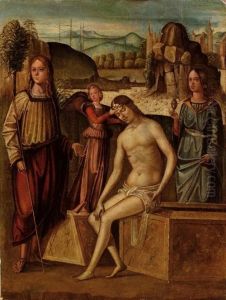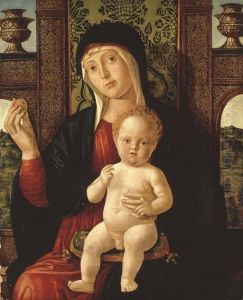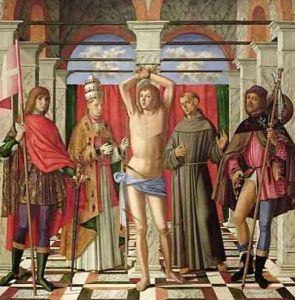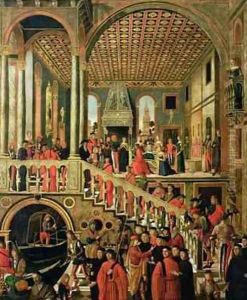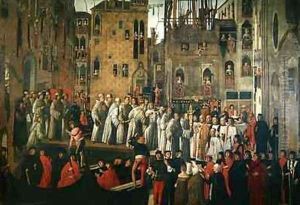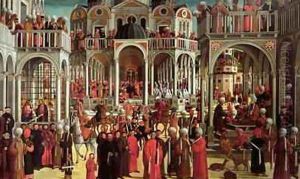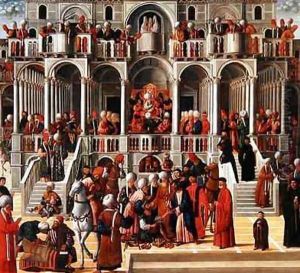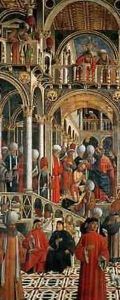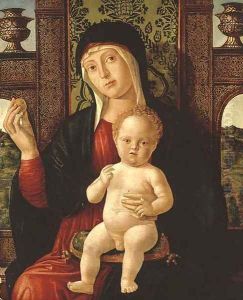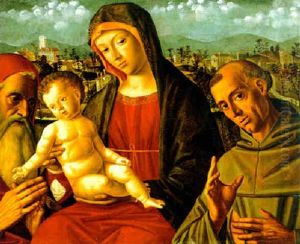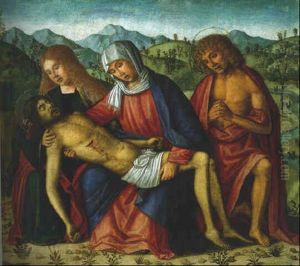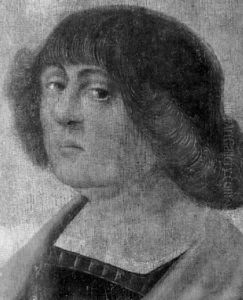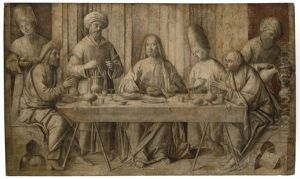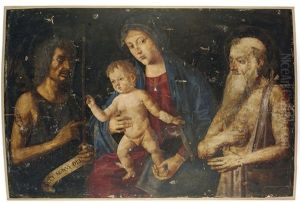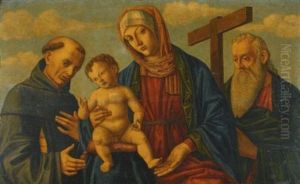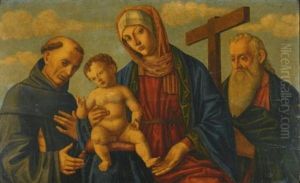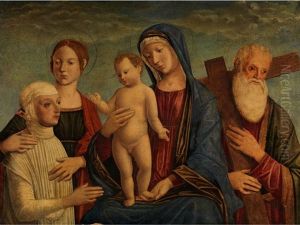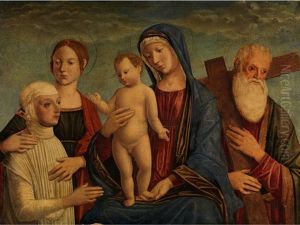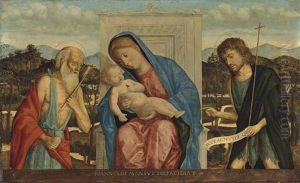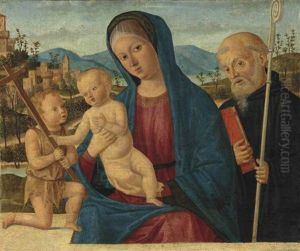Giovanni di Niccolo Mansueti Paintings
Giovanni di Niccolò Mansueti was a Venetian painter active during the Renaissance period, a time when Venice was a flourishing center of art and culture. Born around 1465, Mansueti's work is often associated with the school of Giovanni Bellini, one of the most influential Venetian artists of the time, though it is not clear if Mansueti was directly one of Bellini's pupils. His style, however, shows a clear influence of Bellini's approach to color, light, and composition, as well as elements from other contemporaneous artists such as Vittore Carpaccio and Cima da Conegliano.
Mansueti specialized in religious subjects, often depicting biblical scenes with a remarkable attention to detail and a vivid use of color that was characteristic of the Venetian school. His paintings are noted for their narrative clarity, as well as their detailed portrayal of contemporary Venetian life and architecture, providing a valuable glimpse into the society of his time. One of his most famous works is the 'Miracle of the True Cross at the Bridge of San Lorenzo', which is celebrated for its intricate storytelling and detailed depiction of 15th-century Venice.
Despite his contributions to the Venetian Renaissance, Mansueti was not as widely recognized as his contemporaries during his lifetime or in the immediate centuries that followed. It was not until the late 19th and 20th centuries that art historians began to reevaluate his work, acknowledging his skill in blending narrative content with the rich, luminous palette typical of Venetian painting.
Mansueti's exact date of death is uncertain, but it is believed he died around 1526. Today, his works are held in various museums and collections around the world, where they are studied for their artistic and historical value. Mansueti remains an intriguing figure in the study of Renaissance art, his paintings offering insights into the cultural and religious life of Venice during a pivotal period in its history.
